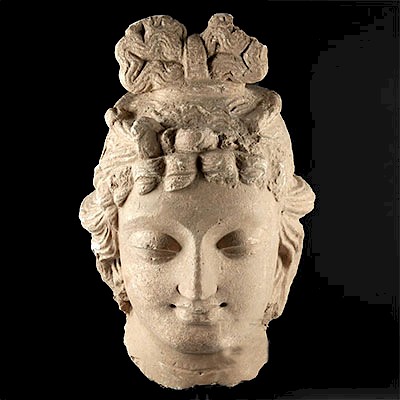Rare Roman Bronze Oil Lamp - Nubian Form
Lot 55
About Seller
Artemis Gallery
686 S Taylor Ave, Ste 106
Louisville, CO 80027
United States
Selling antiquities, ancient and ethnographic art online since 1993, Artemis Gallery specializes in Classical Antiquities (Egyptian, Greek, Roman, Near Eastern), Asian, Pre-Columbian, African / Tribal / Oceanographic art. Our extensive inventory includes pottery, stone, metal, wood, glass and textil...Read more
Estimate:
$3,800 - $5,700
Absentee vs Live bid
Two ways to bid:
- Leave a max absentee bid and the platform will bid on your behalf up to your maximum bid during the live auction.
- Bid live during the auction and your bids will be submitted real-time to the auctioneer.
Bid Increments
| Price | Bid Increment |
|---|---|
| $0 | $25 |
| $300 | $50 |
| $1,000 | $100 |
| $2,000 | $250 |
| $5,000 | $500 |
| $10,000 | $1,000 |
| $20,000 | $2,500 |
| $50,000 | $5,000 |
| $100,000 | $10,000 |
| $200,000 | $20,000 |
About Auction
By Artemis Gallery
Aug 30, 2018
Set Reminder
2018-08-30 10:00:00
2018-08-30 10:00:00
America/New_York
Bidsquare
Bidsquare : Fine Antiquities / Asian / Ethnographic Art
https://www.bidsquare.com/auctions/artemis-gallery/fine-antiquities-asian-ethnographic-art-3402
Featuring classical antiquities, Asian, ancient and ethnographic art from cultures encompassing the globe, plus fine art. Artemis Gallery info@artemisgallery.com
Featuring classical antiquities, Asian, ancient and ethnographic art from cultures encompassing the globe, plus fine art. Artemis Gallery info@artemisgallery.com
- Lot Description
Roman, Imperial period, ca. 1st to 3rd century CE. An incredibly-detailed and striking cast bronze oil lamp in the form of the head of an African, who were known as Ethiopians (Aethiops) or Nubians to the Romans. The head is stylized, and elongates below the nose into a huge mouth with a hexagonal spout emerging from it like a monstrous tongue. The hair is depicted as styled into thick, incised rows. The eyes are large, and the nose broad. An incised dot in the center of the forehead may once have had an inlay. The head stands on a wide disc foot. A large, ornate handle with two flourishes rises from the back. There is a lid attached at the base of the handle by a hinge; in front of that is a tall projection, perhaps once used for suspension. Size: 5.25" L x 1.75" W x 3.6" H (13.3 cm x 4.4 cm x 9.1 cm)
The Romans had extensive contacts with people from Saharan and sub-Saharan Africa (in addition to variously occupying land in Egypt and western North Africa). Gold, food, spices, slaves, textiles, coinage, and even exotic animals were part of the robust trade between these regions. Some Africans lived in Rome, and some notable examples ascended to high social status. Well-read Romans regarded the kingdom of Ethiopia - which they used to refer to everything south of Egypt - as a place to be respected. However, in Roman mythology and literature, black skin was a sign of an inhabitant of the Underworld - for example, Charon is described not only as having black skin, but also as having the facial features of an Aethiops by multiple Classical authors, including Ovid, Pliny, and Virgil. Actual African and Egyptian performers played theatrical roles of Underworld characters, and according to Cassius Dio, Emperor Domitian (r. 81-96 CE) threw a dinner party for Senators he disliked where he made his adolescent slaves paint themselves black to represent the Underworld in order to terrify his guests. What Romans intended by their artistic depictions of Africans is unclear, and remains a point of research and debate.
Provenance: private East Coast, USA collection
All items legal to buy/sell under U.S. Statute covering cultural patrimony Code 2600, CHAPTER 14, and are guaranteed to be as described or your money back.
A Certificate of Authenticity will accompany all winning bids.
We ship worldwide and handle all shipping in-house for your convenience.
#133297Intact, with mottled dark green and brown patina. The hinge on the lid is frozen in place.Condition
- Shipping Info
-
All shipping is handled in-house for your convenience. Your invoice from Artemis Gallery will include shipping calculation instructions. If in doubt, please inquire BEFORE bidding for estimated shipping costs for individual items.
-
- Buyer's Premium



 EUR
EUR CAD
CAD AUD
AUD GBP
GBP MXN
MXN HKD
HKD CNY
CNY MYR
MYR SEK
SEK SGD
SGD CHF
CHF THB
THB


















